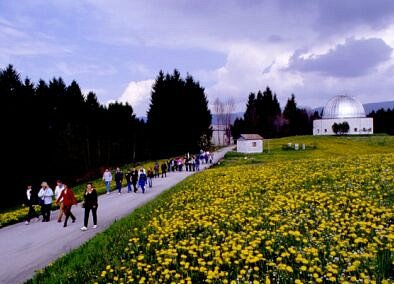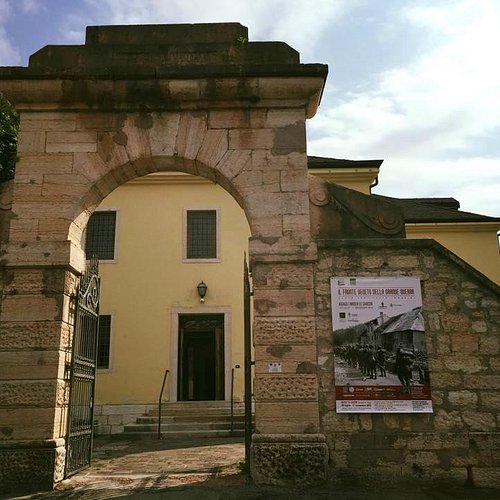Top 7 Museums in Asiago, Veneto
Asiago (Italian: [aˈzjaːɡo]; Cimbrian: Slege, German: Schlägen [ˈʃlɛːɡn̩]) is the name of both a major Italian PDO (Protected Designation of Origin) cheese and a minor township (population roughly 6,500) in the surrounding plateau region (the Altopiano di Asiago or Altopiano dei Sette Comuni, Asiago plateau) in the Province of Vicenza in the Veneto region of Northeastern Italy. It is near the border between the Veneto and Trentino-Alto Adige/Südtirol regions in the foothills of the Alps, and about equidistant (60 km) from the major cities of Trento to the west and Vicenza to the south. The Asiago region is the origin of Asiago cheese. The town was the site of a major battle between Austrian and Italian forces on the Alpine Front of World War I. It is a major ski resort destination as well as the site of the Astrophysical Observatory of Asiago, operated by the University of Padua.
Restaurants in Asiago
1. Galleria d'Arte Busellato e studio B.LAB
Overall Ratings
5.0 based on 1 reviews
Atelier d'Arte Moderna dell'artista Carlo Busellato. Figlio d’arte, diplomatosi al Liceo Artistico, apprende dal padre la difficile e affascinante tecnica della pittura ad olio su plexiglas. Atelier d'Arte Moderna artist Carlo Busellato. Son of art, graduating from art school, he learned from his father the difficult and fascinating technique of oil painting on plexiglas.
2. INAF Osservatorio Astronomico di Padova
Overall Ratings
4.5 based on 67 reviews
Asiago branch of INAF-OAPd (National Institute of Astrophysics, Astronomical Observatory of Padova) and DFA-UniPd (Department of Physics and Astronomy of the University of Padova), is the ideal place for the direct contact of the public with astronomy and for promoting the scientific research of our Institute. The domes, the telescopes operating in Asiago and the presence of a multimedia room dedicated to education and outrech activities, allow to organize a rich programme for students, teachers, and visitors, with lectures, courses, visits to the Galileo telescope and also to Copernico telescope of Cima Ekar, and sky observations.
3. Museo Le Carceri
Overall Ratings
4.5 based on 36 reviews
"Le Carceri" ("The Prison") museum was founded in 2001, due to the renovation of the old prisons of Asiago. Abandoned for decades, the building was restored in 2001 though its original architecture was preserved. Today, this area is home to numerous art exhibitions. The interior of the building has preserved its original design, which allows organizing exhibitions distributing the works of the artists in the former cells.
4. Museum of Astronomical Instruments
5. Museo Naturalistico Didattico
Overall Ratings
4.0 based on 35 reviews
The Museum preserves and displays naturalistic samples relating to the territory of the Plateau of Asiago, offers teaching didactics, and dissemination and also research. The museum is part of the project called Educational Laboratory Environmental born thanks to the passion and donations of Patrick's teacher. The Museum aims to provide schools of every grade services, materials, training opportunities for students and stands as a cultural reference point for citizens and tourists plateau on all issues related to the natural sciences.
6. Museo dell'acqua
Overall Ratings
3.5 based on 24 reviews
7. Museo Battaglia Tre Monti
Overall Ratings
4.5 based on 3 reviews





